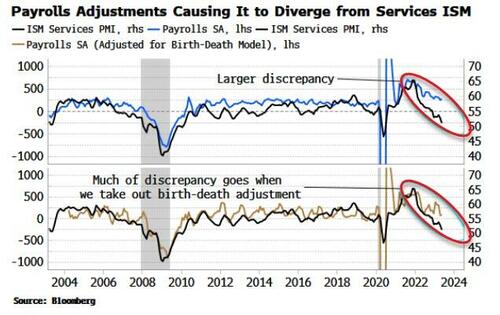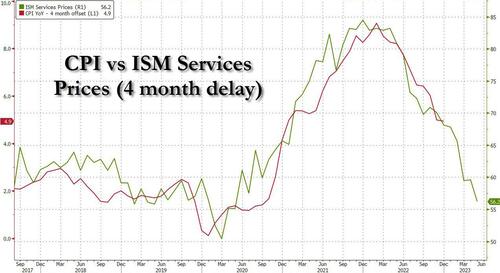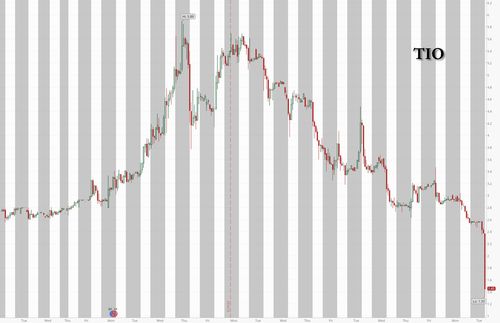From Doe v. Ladapo, decided today by Judge Robert Hinkle (N.D. Fla.):
This action presents a constitutional challenge to a Florida statute and rules that (1) prohibit transgender minors from receiving specific kinds of widely accepted medical care and (2) prohibit doctors from providing it. The treatments at issue are GnRH agonists, colloquially known as “puberty blockers,” and cross-sex hormones. This order grants a preliminary injunction….
[II.] Gender identity is real
With extraordinarily rare exceptions not at issue here, every person is born with external sex characteristics, male or female, and chromosomes that match. As the person goes through life, the person also has a gender identity—a deeply felt internal sense of being male or female. For more than 99% of people, the external sex characteristics and chromosomes—the determinants of what this order calls the person’s natal sex—match the person’s gender identity.For less than 1%, the natal sex and gender identity are opposites: a natal male’s gender identity is female, or vice versa. This order refers to such a person who identifies as female as a transgender female and to such a person who identifies as male as a transgender male. This order refers to individuals whose gender identity matches their natal sex as cisgender.
The elephant in the room should be noted at the outset. Gender identity is real. The record makes this clear. The medical defendants, speaking through their attorneys, have admitted it. At least one defense expert also has admitted it. That expert is Dr. Stephen B. Levine, the only defense expert who has actually treated a significant number of transgender patients. He addressed the issues conscientiously, on the merits, rather than as a biased advocate.
Despite the defense admissions, there are those who believe that cisgender individuals properly adhere to their natal sex and that transgender individuals have inappropriately chosen a contrary gender identity, male or female, just as one might choose whether to read Shakespeare or Grisham. Many people with this view tend to disapprove all things transgender and so oppose medical care that supports a person’s transgender existence. In this litigation, the medical efendants have explicitly acknowledged that this view is wrong and that pushing individuals away from their transgender identity is not a legitimate state interest.
Still, an unspoken suggestion running just below the surface in some of the proceedings that led to adoption of the statute and rules at issue—and just below the surface in the testimony of some of the defense experts—is that transgender identity is not real, that it is made up. And so, for example, one of the defendants’ experts, Dr. Paul Hruz, joined an amicus brief in another proceeding asserting transgender individuals have only a “false belief” in their gender identity—that they are maintaining a “charade” or “delusion.” Another defense expert, Dr.
Patrick Lappert—a surgeon who has never performed gender-affirming surgery— said in a radio interview that gender-affirming care is a “lie,” a “moral violation,” a “huge evil,” and “diabolical.” State employees or consultants suggested treatment of transgender individuals is either a “woke idea” or profiteering by the pharmaceutical industry or doctors.
Any proponent of the challenged statute and rules should put up or shut up: do you acknowledge that there are individuals with actual gender identities opposite their natal sex, or do you not? Dog whistles ought not be tolerated.
[III.] The challenged statute and rules
The challenged parts of the statute and rules apply to patients under age 18. The statute prohibits the use of “puberty blockers” to “stop or delay normal puberty in order to affirm a person’s perception of his or her sex if that perception is inconsistent with the person’s [natal] sex.” And the statute prohibits the use of “hormones or hormone antagonists to affirm a person’s perception of his or her sex if that perception is inconsistent with the person’s [natal] sex.” The statute makes violation of these provisions a crime and grounds for terminating a healthcare practitioner’s license.
The statute has exceptions, including, for example, for use of these products during a transition away from them, but the exceptions are not relevant here. And the statute has other provisions, including a prohibition on transgender surgeries, but those provisions, too, are not at issue here.
The challenged rules were adopted by the Florida Board of Medicine and the Florida Board of Osteopathic Medicine. In identical language, the rules prohibit the Boards’ licensed practitioners from treating “gender dysphoria in minors” with “[p]uberty blocking, hormone, or hormone antagonist therapies.” …
[IV.] The standards of care
Transgender individuals suffer higher rates of anxiety, depression, suicidal ideation, and suicide than the population at large. Some suffer gender dysphoria, a mental-health condition recognized in the Diagnostic and Statistical Manual of Mental Disorders, Fifth Edition (“DSM-5”). The diagnosis applies when specific criteria are met. Among other things, there must be a marked incongruence between one’s experienced gender identity and natal sex for at least six months, manifested in specified ways, and clinically significant distress or impairment.
There are well-established standards of care for treatment of gender dysphoria. These are set out in two publications: first, the Endocrine Society Clinical Practice Guidelines for the Treatment of Gender Dysphoria; and second, the World Professional Association for Transgender Health (“WPATH”) Standards of Care, version 8. I credit the abundant testimony in this record that these standards are widely followed by well-trained clinicians. The standards are used by insurers and have been endorsed by the United States Department of Health and Human Services.
Under the standards, gender-dysphoria treatment begins with a comprehensive biopsychosocial assessment. In addition to any appropriate mental-health therapy, there are three types of possible medical intervention, all available only to adolescents or adults, never younger children.
First, for patients at or near the onset of puberty, medications known as GnRH agonists can delay the onset or continuation of puberty and thus can reduce the development of secondary sex characteristics inconsistent with the patient’s gender identity—breasts for transgender males, whiskers for transgender females, changes in body shape, and other physical effects.
Second, cross-sex hormones—testosterone for transgender males, estrogen for transgender females—can promote the development and maintenance of characteristics consistent with the patient’s gender identity and can limit the development and maintenance of characteristics consistent with the patient’s natal sex. For patients treated with GnRH agonists, use of cross-sex hormones typically begins when use of GnRH agonists ends. Cross-sex hormones also can be used later in life, regardless of whether a patient was treated with GnRH agonists.
Third, for some patients, surgery can align physical characteristics with gender identity, to some extent. The most common example: mastectomy can remove a transgender male’s breasts. Perhaps 98% of all such surgeries are performed on adults, not minors.
The motions now before the court deal directly only with GnRH agonists.
The motions deal indirectly with cross-sex hormones, because to achieve their intended result, GnRH agonists are ordinarily followed by cross-sex hormones. The motions do not present any issue related to surgeries.
The court moves on to conclude that the standards of care are supported by “[t]he overwhelming weight of medical authority,” and cites the testimony of doctors in the case, concluding:
The clinical evidence would support, though certainly not mandate, a decision by a reasonable patient and parent, in consultation with properly trained practitioners, to use GnRH agonists at or near the onset of puberty and to use cross-sex hormones later, even when fully apprised of the current state of medical knowledge and all attendant risks. There is no rational basis for a state to categorically ban these treatments.
The record includes no evidence that these treatments have caused substantial adverse clinical results in properly screened and treated patients….
I find, based on the record now before the court, that the plaintiffs are likely to succeed on their claim that they have obtained appropriate medical care for their children to this point, that qualified professionals have properly evaluated the children’s medical conditions and needs in accordance with the well-established standards of care, and that the plaintiffs and their children, in consultation with their treating professionals, have determined that the benefits of treatment with GnRH agonists, and eventually with cross-sex hormones, will outweigh the risks. I find that the plaintiffs’ ability to evaluate the benefits and risks of treating their individual children this way far exceeds the ability of the State of Florida to do so. I find that the plaintiffs’ motivation is love for their children and the desire to achieve the best possible treatment for them. This is not the State’s motivation.
The court concludes that “banning treatment with GnRH agonists and cross-sex hormones” likely “violates the Fourteenth Amendment’s Equal Protection Clause” because it discriminates based on sex and gender nonconformity, citing and elaborating on Brandt ex rel. Brandt v. Rutledge (8th Cir. 2022), which held likewise:
Consider an adolescent, perhaps age 16, that a physician wishes to treat with testosterone. Under the challenged statute, is the treatment legal or illegal? To know the answer, one must know the adolescent’s sex. If the adolescent is a natal male, the treatment is legal. If the adolescent is a natal female, the treatment is illegal. This is a line drawn on the basis of sex, plain and simple.
In asserting the contrary, the defendants note that the reason for the treatment—the diagnosis—is different for the natal male and natal female. Indeed it is. But this does not change the fact that this is differential treatment based on sex. The reason for sex-based differential treatment is the purported justification for treating the natal male and natal female differently—the justification that must survive intermediate scrutiny. One can survive—but cannot avoid—intermediate scrutiny by saying there is a good reason for treating a male and female differently….
Drawing a line based on gender nonconformity—this includes transgender status—also triggers intermediate scrutiny….
The court concludes that Florida’s arguments for why intermediate scrutiny are “largely pretextual” and don’t justify the law. (The analysis is too long for me to quote here; see the opinion for the details.) And it also concludes that plaintiffs are likely to prevail on their parental rights claims:
The defendants say a parent’s right to control a child’s medical treatment does not give the parent a right to insist on treatment that is properly prohibited on other grounds. Quite so. If the state could properly prohibit the treatments at issue as unsafe, parents would have no right to override the state’s decision. But as set out above, there is no rational basis, let alone a basis that would survive heightened scrutiny, for prohibiting these treatments in appropriate circumstances.
The court closes with this:
Gender identity is real. Those whose gender identity does not match their natal sex often suffer gender dysphoria. The widely accepted standard of care calls for evaluation and treatment by a multidisciplinary team. Proper treatment begins with mental-health therapy and is followed in appropriate cases by GnRH agonists and cross-sex hormones. Florida has adopted a statute and rules that prohibit these treatments even when medically appropriate. The plaintiffs are likely to prevail on their claim that the prohibition is unconstitutional. And they have met the other prerequisites to a preliminary injunction.
The post Court Blocks Florida Law Limiting "Puberty Blockers" and Cross-Sex Hormones for Minors appeared first on Reason.com.
from Latest https://ift.tt/x1BK3Aa
via IFTTT










